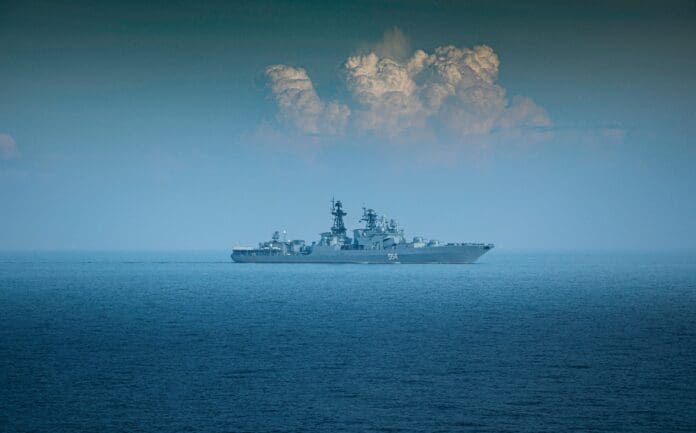This post is also available in:
 עברית (Hebrew)
עברית (Hebrew)
A new 3,000-ton littoral combat ship (LCS) capable of advanced anti-submarine and surface warfare operations has officially entered service with the U.S. Navy. Named USS Pierre (LCS-38), the vessel represents the next step in the Navy’s push to strengthen its presence in near-shore and contested waters — areas increasingly critical for maritime defense and global security.
Modern naval forces face growing challenges in coastal zones, where shallow waters, civilian traffic, and enemy submarines complicate traditional operations. The LCS program was created to address these threats through ships that are faster, more flexible, and mission-adaptable than conventional frigates or destroyers. The USS Pierre, an Independence-variant LCS, is designed for exactly that: agile maneuvering close to shore while maintaining the power and versatility of a full-scale combat ship.
Built with a lightweight aluminum trimaran hull, the 12.74-meter-long vessel can exceed 80 kmph — far faster than most warships of its size. Its modular design allows it to be rapidly reconfigured for different missions, including anti-submarine warfare, mine countermeasures, or surface combat. The ship is equipped with a 57mm main gun, anti-aircraft missiles, and machine guns, as well as flight facilities for two helicopters that extend its range for reconnaissance and strike missions.
According to Interesting Engineering, the LCS concept emphasizes integration with unmanned systems and joint task forces, enabling coordinated operations between crewed ships, aerial drones, and underwater vehicles. This capability is particularly relevant for modern defense environments, where networked, multi-domain responses are essential for maintaining situational awareness and deterrence.
For homeland security and allied defense applications, vessels like the USS Pierre offer strategic advantages beyond open-ocean combat. Their speed and adaptability make them ideal for coastal patrols, counter-smuggling operations, and protection of maritime infrastructure. As naval forces worldwide expand their focus on littoral and hybrid threats, such platforms highlight the growing role of modular, networked ships in ensuring both local and global maritime security.
The USS Pierre, now based in San Diego, becomes the fifteenth Independence-variant LCS to join the fleet — a symbol of evolving naval strategy in an era defined by speed, flexibility, and integration across all domains of defense.


























